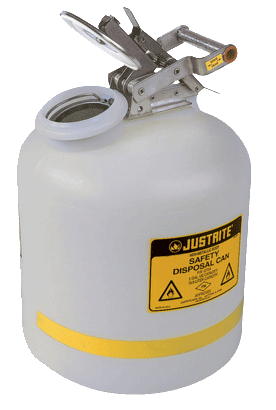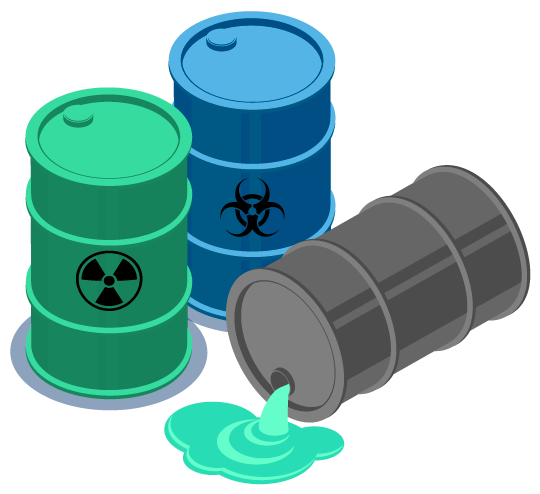Safe and Lasting Liquid Waste Disposal: Your Go-To Provider
Safe and Lasting Liquid Waste Disposal: Your Go-To Provider
Blog Article
How Fluid Garbage Disposal Functions: A Thorough Overview of Strategies and Technologies Used

Summary of Liquid Waste Kind
The complexity of fluid waste types demands a complete understanding of their characteristics and implications for disposal. Liquid waste can extensively be categorized into a number of kinds, consisting of commercial, local, farming, and contaminated materials. Each group displays distinctive homes, calling for particular management techniques to reduce ecological and wellness dangers.
Industrial fluid waste originates from producing processes and usually consists of a variety of pollutants, such as hefty metals, solvents, and natural compounds. Community fluid waste, mostly consisting of wastewater from houses and industrial establishments, has organic matter, nutrients, and virus (industrial wastewater treatment). Agricultural liquid waste, including drainage from farms, might consist of plant foods, pesticides, and pet waste, presenting dangers to water top quality and ecological communities
Harmful fluid waste is defined by its toxicity, reactivity, or potential to create injury. This category includes materials like acids, bases, and certain chemicals that demand stringent handling and disposal protocols. Recognizing these varied fluid waste types is essential for developing reliable disposal approaches and ensuring conformity with ecological policies. Appropriate category and characterization are vital for executing suitable treatment methods and minimizing the damaging effect on public health and wellness and the environment.
Physical Therapy Approaches

Screening is the initial step, where bigger fragments and debris are removed from the liquid waste using displays or grates. In sedimentation storage tanks, larger bits work out at the bottom, developing a sludge layer, while the cleared up fluid can be additional treated.
Purification is another necessary approach that entails passing the fluid via porous products, such as sand or membranes, to catch smaller sized fragments. This action boosts the quality of the fluid, making it ideal for succeeding treatment processes.

Chemical Therapy Strategies
Chemical treatment methods are essential for properly handling liquid waste, particularly in attending to dissolved and colloidal contaminants that physical methods might not adequately remove. These techniques utilize various chemical representatives to counteract, speed up, or transform unsafe compounds right into less harmful forms.
One usual approach is coagulation and flocculation, where chemicals such as alum or ferric chloride are added to promote the gathering of suspended particles. This process improves sedimentation, enabling easier removal of the resulting sludge. In addition, oxidation processes, using representatives like chlorine or ozone, great site are used to damage down complicated natural substances and pathogens, making the waste much safer for discharge or further therapy.
Neutralization is another crucial method, which changes the pH of acidic or alkaline waste streams to neutral degrees, avoiding potential damage to downstream systems and the environment. Moreover, advanced oxidation processes (AOPs) make use of mixes of oxidants and ultraviolet light to break down consistent pollutants, accomplishing a greater level of treatment efficiency.
Biological Therapy Processes
Organic therapy processes play an important function in the administration of liquid waste by making use of bacteria to decompose raw material and reduce pollutant levels. These processes can be extensively classified right into aerobic and anaerobic treatments, each utilizing certain microbial neighborhoods to attain effective waste destruction.
Cardio treatment involves using oxygen to promote the check my site breakdown of natural materials by bacteria. This procedure is commonly carried out in triggered sludge systems, where oygenation tanks supply a favorable environment for microbial development, resulting in the oxidation of organic toxins. The resultant biomass can be separated from dealt with effluent via sedimentation.
On the other hand, anaerobic therapy happens in the absence of oxygen, relying upon various bacteria to damage down raw material. This approach is specifically helpful for high-strength waste, as it creates biogas, a renewable resource source, while minimizing sludge manufacturing. Technologies such as anaerobic digesters are often utilized in community and industrial applications.
Both aerobic and anaerobic organic treatments not only minimize the environmental effect of liquid waste however likewise facilitate resource recuperation, making them essential elements of lasting waste management techniques. Their efficiency, effectiveness, and adaptability support their widespread application across different markets.
Emerging Technologies in Disposal
Innovative methods to fluid garbage disposal are swiftly evolving, driven by advancements in innovation and an increasing emphasis on sustainability. Among these arising modern technologies, membrane bioreactors (MBRs) have actually acquired traction for their capability to incorporate biological treatment with membrane filtering, causing top notch effluent that can be reused in different applications. MBRs enable smaller sized impacts and much more efficient operations contrasted to typical systems.
Another encouraging advancement is the usage of anaerobic digestion combined with nutrient healing innovations, which not just treats fluid waste yet also creates try this site biogas and recoups useful nutrients like nitrogen and phosphorus. This twin benefit boosts source effectiveness and decreases ecological effect.
Additionally, progressed oxidation processes (AOPs) are being adopted for the degradation of intricate natural toxins. These approaches utilize effective oxidants and catalysts to break down contaminants at the molecular level, providing a highly reliable option for tough waste streams.
Furthermore, the integration of man-made knowledge and device learning in waste administration systems is optimizing functional efficiency and predictive maintenance, resulting in decreased expenses and enhanced ecological compliance. These modern technologies mirror a considerable change in the direction of even more reliable and sustainable liquid waste disposal techniques.
Conclusion
In conclusion, effective liquid waste disposal necessitates an extensive understanding of numerous strategies and modern technologies. By constantly progressing these techniques, it ends up being possible to address the growing obstacles associated with fluid waste, ultimately adding to environmental defense and source recuperation.
Liquid waste disposal is a vital facet of environmental administration, requiring a thorough understanding of various strategies and modern technologies customized to different waste kinds. Fluid waste can broadly be categorized right into several types, including commercial, municipal, agricultural, and unsafe waste. Agricultural liquid waste, consisting of runoff from farms, may have fertilizers, pesticides, and pet waste, posturing threats to water quality and communities.
Different physical therapy approaches play an essential duty in handling liquid waste efficiently - industrial wastewater treatment.In verdict, efficient fluid waste disposal demands a detailed understanding of numerous methods and innovations
Report this page